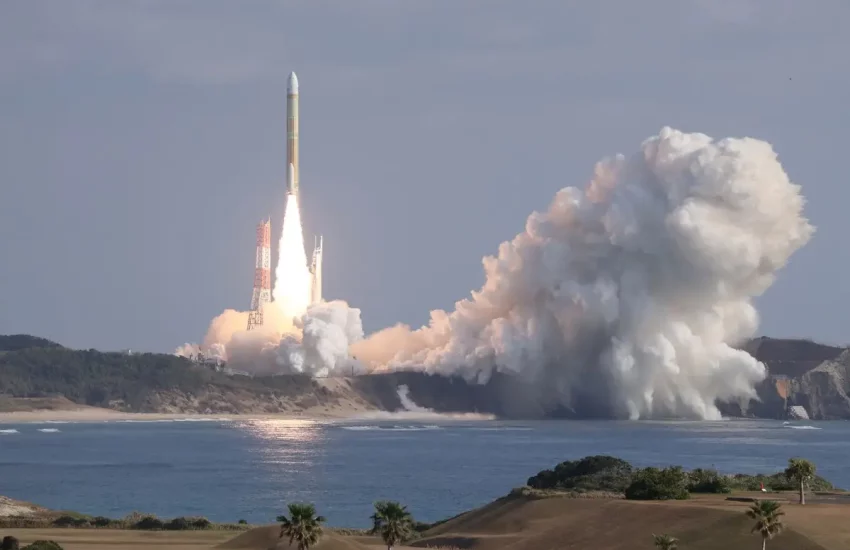After years of delays and two unsuccessful attempts, Japan’s space agency celebrated the successful launch of its new flagship rocket on Saturday, making it third time lucky.
One day, the next-generation H3 spacecraft may be used to transport supplies to Moon outposts, posing a threat to SpaceX’s Falcon 9.
President of the space agency JAXA Hiroshi Yamakawa remarked, “I’ve been in the space industry for a long time, but I’ve never felt so happy and so relieved.”
With this most recent mission, Japan has become just the fifth nation to land a vessel on the moon, following the successful landing of an unmanned probe there last month, although at an oblique angle.
At 9:22 a.m. (0022 GMT), the H3 rocket launched from the Tanegashima Space Center in southwest Japan.
After the agency’s live video revealed that the H3’s engines had successfully burnt, indicating the rocket had made it into orbit, the JAXA control center let out cheers and congratulations.
The H3, which was developed in collaboration with Mitsubishi Heavy Industries and JAXA, is the replacement for the H-IIA launch system, which made its debut in 2001.
According to JAXA, the vessel is engineered to achieve “high flexibility, high reliability, and high cost performance” and will uphold Japan’s autonomous access to space.
Although the H3 is disposable, scientists believe the test of its ground-breaking technology is noteworthy. This is in contrast to the reusable Falcon 9.
The director of the Melbourne Space Laboratory at the University of Melbourne, Michele Trenti, stated that “the H3 rocket has a unique and novel first-stage engine that delivers greater thrust compared to state-of-the-art rockets.”
The H3 “may prove to be the most economical rocket,” which would lower the expense of solar system exploration.
Launched in February 2023, the rocket was abandoned due to ignition problems that left it immobile on the ground.
Technical issues on the second attempt in March of last year resulted in the destruct command being issued shortly after blast-off.
The inclement weather even caused a four-day delay in this current launch.
The rocket carrying two tiny satellites made a successful liftoff on Saturday.
It is anticipated that one of the microsatellites would record images and videos to aid in catastrophe avoidance.
The other is meant to monitor the operating status of factories located on the ground; it is fitted with an infrared sensor.
JAXA’s live stream also confirmed that the microsatellites had separated.
“Once the rocket is successfully launched into orbit, we will continue to analyze the sequences,” a JAXA representative stated.
